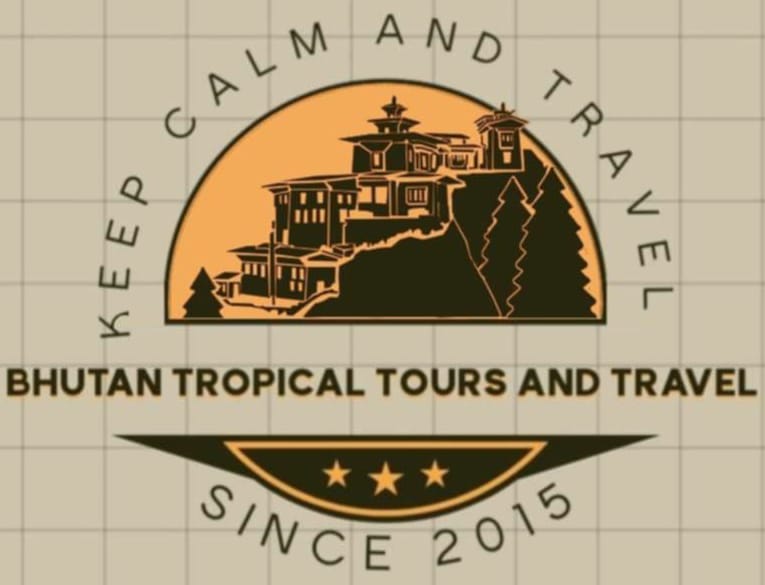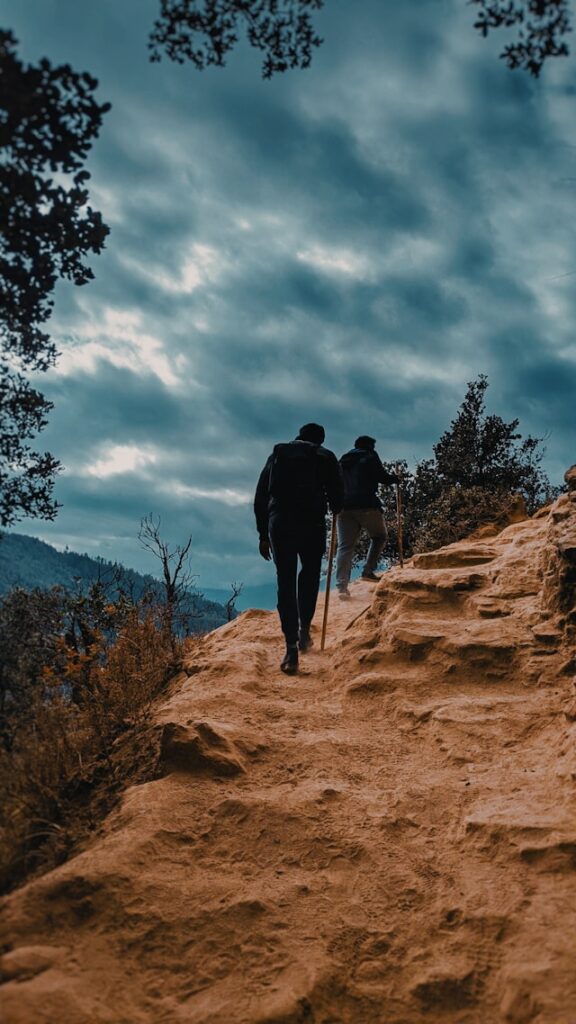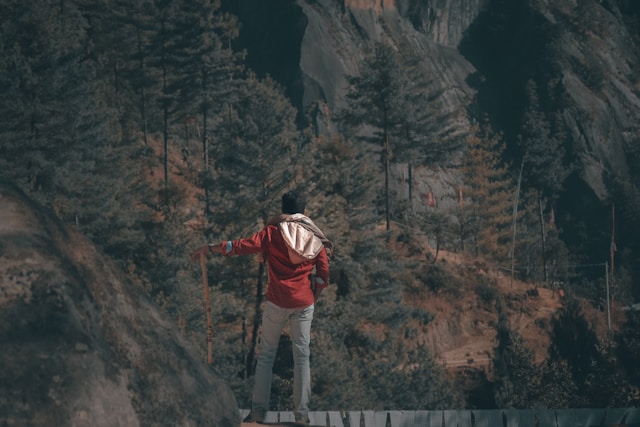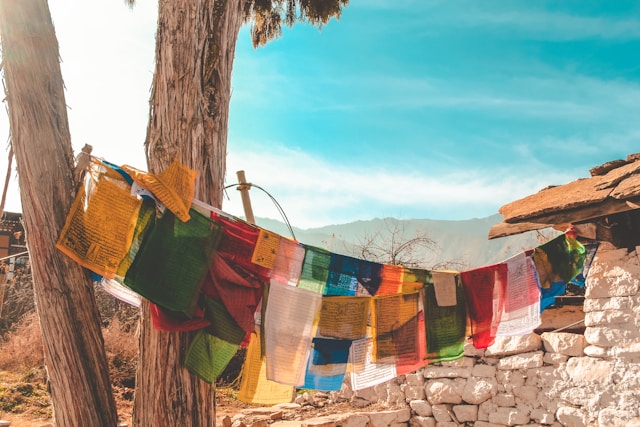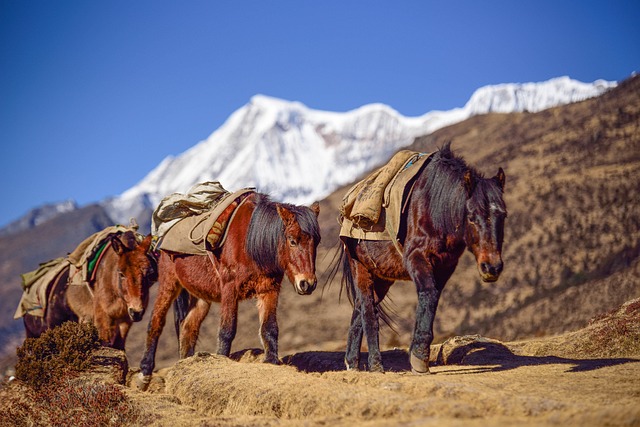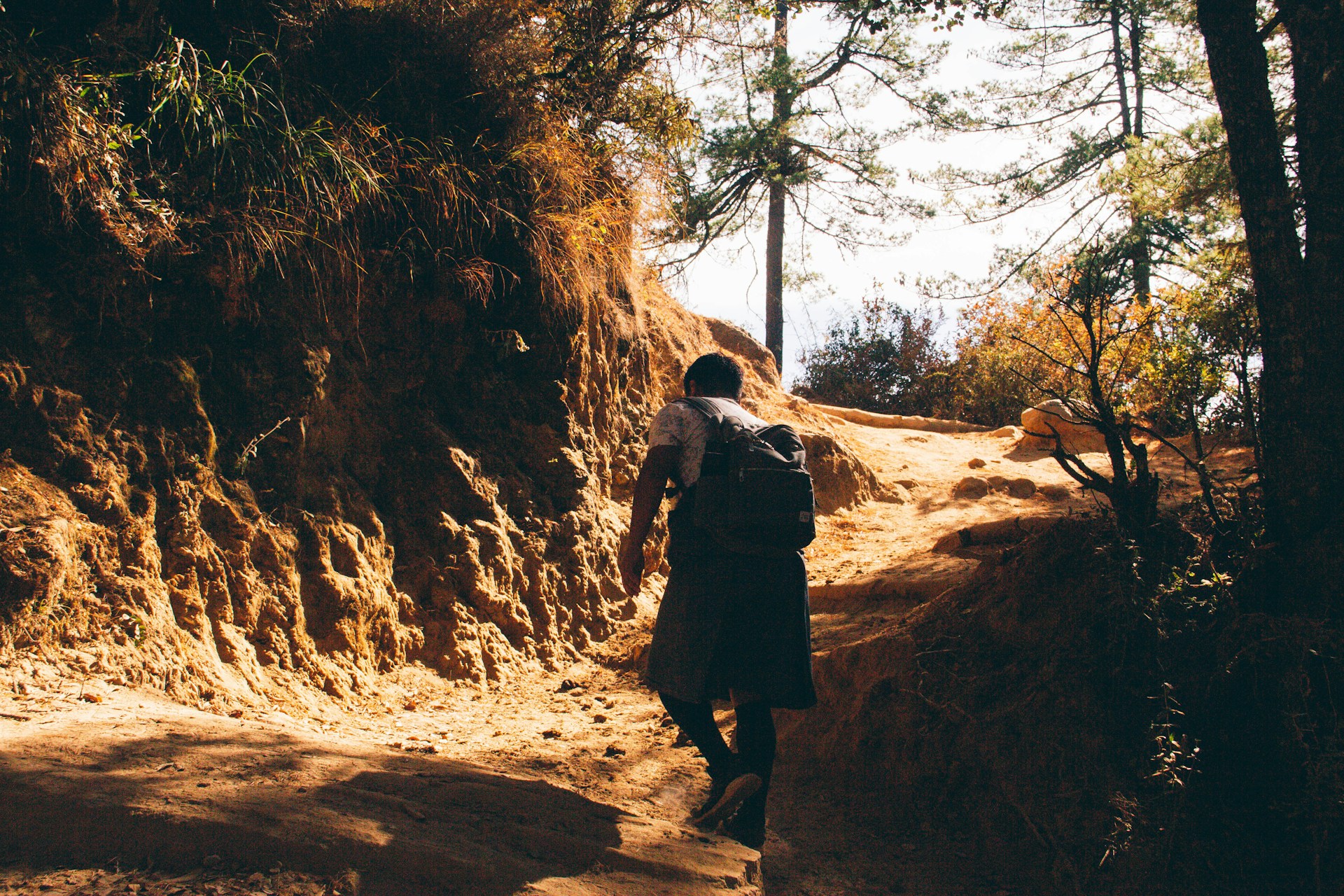
Druk Path Trek – 7 Nights 8 Days
Share This Trip:
The Druk Path Trek is one of Bhutan’s most celebrated and scenic treks, offering an exceptional blend of natural beauty, cultural immersion, and moderate adventure. Spanning approximately six days, this trek connects the historic town of Paro with the bustling capital city of Thimphu, taking trekkers through a diverse landscape of lush forests, vibrant alpine meadows, and high mountain passes.
Designed for trekkers of all levels, this route ensures a comfortable pace, allowing you to fully appreciate the stunning surroundings without extreme physical demands. The trail winds through dense forests of pine and rhododendron, expansive alpine meadows, and high-altitude lakes with crystal-clear waters reflecting majestic peaks.
One of the trek’s highlights is visiting ancient monasteries and fortresses, offering a glimpse into Bhutan’s rich spiritual heritage. Cultural immersion is another key aspect, as you’ll encounter local villagers and yak herders, providing insight into the traditional Bhutanese lifestyle.
Waking up to misty mountains and spending evenings under star-studded skies in well-equipped campsites make the Druk Path Trek a truly magical experience.
Embark on this journey with Bhutan Tropical Tours and Travel to discover the timeless allure of the Himalayas and create unforgettable memories.
Highlights of the Druk Path trek
- Stunning Scenery: Enjoy breathtaking views of snow-capped Himalayan peaks, serene mountain lakes, and vibrant rhododendron forests.
- Ancient Monasteries: Visit historic sites such as the Paro Taktsang (Tiger’s Nest) and the Phajoding Monastery, offering insights into Bhutan’s rich spiritual heritage.
- High Mountain Passes: Cross several high passes, including the Phume La (4,210 meters), providing panoramic views and a sense of achievement.
- Cultural Encounters: Interact with local villagers and learn about Bhutanese customs and traditions as you pass through remote settlements.
- Diverse Flora and Fauna: Discover Bhutan’s unique biodiversity, including rare plants and wildlife, in the pristine environment of the trek.
- Comfortable Camping: Enjoy well-equipped campsites with spectacular views, ensuring a comfortable and memorable trekking experience.
- Accessible Adventure: Perfect for both novice and experienced trekkers, the Druk Path Trek offers a moderate challenge with rewarding experiences.
Embark on the Druk Path Trek with Bhutan Tropical Tour and Travels and immerse yourself in the natural and cultural wonders of Bhutan.
Day 1: Arrival in Paro
- Morning Arrival: Land at Paro International Airport, where you’ll be greeted by a representative from Bhutan Tropical Tours and Travel.
- Transfer to Hotel: A comfortable transfer to your hotel in Paro is arranged for you.
- Welcome Refreshments: Enjoy a welcome drink and light refreshments upon arrival at your hotel.
- Hotel Check-in: Check into your hotel and settle into your room.
- Short Rest: Take some time to rest and acclimate to the altitude.
- Lunch: Savor a traditional Bhutanese lunch at a local restaurant.
- Visit Paro Dzong: Explore Paro Dzong, a majestic fortress and monastery, offering insights into Bhutanese architecture and culture.
- National Museum: Visit the nearby National Museum, housed in the ancient Ta Dzong watchtower, featuring Bhutanese art, artifacts, and history.
- Evening Stroll: Take a leisurely evening walk around Paro town to experience local life and shop for souvenirs.
- Welcome Dinner: Enjoy a welcome dinner featuring Bhutanese cuisine and a briefing about the upcoming trek.
Day 2: Paro – Jele Dzong (Approx. 10 km, 4-5 hours)
- Morning Departure: After breakfast, pack your gear and meet your trekking team.
- Trailhead Start: Start the trek from the trailhead near Paro, beginning with a gradual ascent.
- Pine Forests: Hike through beautiful pine forests, with occasional views of Paro Valley below.
- Wildlife Spotting: Keep an eye out for local wildlife, including various bird species.
- Lunch Break: Stop for a packed lunch in a scenic spot along the trail.
- Rhododendron Blooms: Depending on the season, enjoy the vibrant rhododendron blooms along the path.
- Steeper Climb: The trail becomes steeper as you approach Jele Dzong.
- Arrival at Jele Dzong: Reach Jele Dzong, a historic fortress perched on a ridge.
- Explore Jele Dzong: Take some time to explore the dzong and enjoy panoramic views of the Paro Valley and Mount Jomolhari in the distance.
- Camp Setup: Set up camp near Jele Dzong, enjoy a hot meal, and rest for the night.
Day 3: Jele Dzong – Jangchulakha (Approx. 10 km, 4-5 hours)
- Morning Routine: Wake up early to breathtaking views and enjoy a hearty breakfast.
- Start Trek: Begin your trek from Jele Dzong, heading towards Jangchulakha.
- Alpine Meadows: Hike through alpine meadows, where you may see yaks grazing.
- Photographic Opportunities: Take advantage of numerous photo opportunities with stunning backdrops.
- Yak Herders Camps: Pass by traditional yak herders’ camps and observe their way of life.
- Gradual Ascent: Continue a gentle ascent through mixed alpine forests.
- Lunch Break: Enjoy a picnic lunch in a picturesque meadow.
- High-Altitude Flora: Notice the unique high-altitude flora, including rare plants and flowers.
- Arrival at Jangchulakha: Reach Jangchulakha, set up camp amidst stunning mountain scenery.
- Evening Relaxation: Relax at the campsite, enjoy a warm meal, and prepare for the next day’s trek.
Day 4: Jangchulakha – Jimilang Tsho (Approx. 11 km, 4-5 hours)
- Morning Start: Begin your day with an early breakfast at the campsite.
- Forest Trails: Traverse through dense rhododendron forests and enjoy the serene atmosphere.
- Alpine Landscape: Ascend further into alpine landscapes with panoramic mountain views.
- Wildlife Sightings: Look out for Himalayan monal pheasants and other wildlife in the area.
- Jimilang Tsho: Arrive at Jimilang Tsho, a pristine alpine lake known for its tranquil waters and surrounding peaks.
- Picnic Lunch: Take a break for a picnic lunch by the lakeside, soaking in the natural beauty.
- Exploration Time: Explore the lakeside area and capture memorable photographs.
- Cultural Insight: Learn about the local legends and myths associated with Jimilang Tsho from your guide.
- Camp Setup: Set up camp near Jimilang Tsho, enjoying the peaceful ambiance of the high-altitude lake.
- Evening Reflection: Relax at the campsite, share stories with fellow trekkers, and enjoy dinner under the starry sky.
Day 5: Jimilang Tsho – Simkotra Tsho (Approx. 11 km, 4-5 hours)
- Morning Trek: Wake up to a refreshing morning at Jimilang Tsho and have breakfast.
- Scenic Trail: Begin your trek on a scenic trail that winds through alpine meadows and rocky terrain.
- Landscape Changes: Notice the changing landscape as you ascend to higher altitudes.
- Small Lakes: Pass by several smaller lakes and enjoy their tranquil beauty.
- Floral Diversity: Marvel at the diversity of high-altitude flora, including unique flowers and plants.
- Simkotra Tsho: Reach Simkotra Tsho, another stunning high-altitude lake surrounded by snow-capped peaks.
- Campsite Setup: Set up camp near Simkotra Tsho and relish in the peaceful surroundings.
- Afternoon Relaxation: Spend the afternoon exploring the area around the lake or simply relaxing at the campsite.
- Evening Activities: Enjoy a warm dinner prepared by your trekking team and share stories around the campfire.
- Night Sky: Witness the brilliance of the night sky in this remote, pristine environment.
Day 6: Simkotra Tsho – Phajoding Monastery (Approx. 10 km, 5-6 hours)
- Early Start: Wake up early to enjoy the sunrise over Simkotra Tsho and have breakfast.
- Phume La Pass: Begin your trek with a challenging ascent to Phume La Pass, the highest point of the trek at 4,210 meters.
- Panoramic Views: Pause at the pass to admire panoramic views of the Himalayan peaks and surrounding valleys.
- Descent: Descend from Phume La Pass through mixed forests of juniper, pine, and rhododendron.
- Phajoding Monastery: Arrive at Phajoding Monastery, a sacred site perched on a hillside overlooking Thimphu Valley.
- Monastic Encounters: Explore the monastery complex and interact with resident monks, gaining insights into Bhutanese Buddhism.
- Campsite Setup: Set up camp near Phajoding Monastery, enjoying the serene atmosphere and spiritual ambiance.
- Evening Exploration: Take a short hike to nearby viewpoints or meditate amidst the peaceful surroundings.
- Cultural Evening: Participate in a traditional Bhutanese cultural evening with songs and dances around a bonfire.
- Final Night: Reflect on your trekking journey and enjoy a farewell dinner with your trekking team and guides.
Day 7: Phajoding Monastery – Thimphu (Approx. 5 km, 3-4 hours)
- Morning Start: Begin the day with breakfast at the campsite near Phajoding Monastery.
- Descent to Thimphu: Descend from Phajoding Monastery through mixed forests and scenic trails.
- Thimphu Valley Views: Enjoy panoramic views of Thimphu Valley as you descend.
- Wildlife Spotting: Keep an eye out for wildlife such as langur monkeys and various bird species.
- Cultural Interactions: Encounter local villagers and farmers along the trail, offering insights into rural Bhutanese life.
- Arrival in Thimphu: Reach Thimphu, the capital city of Bhutan, and transfer to your hotel.
- Hotel Check-in: Check into your hotel and refresh after the trekking journey.
- Afternoon Leisure: Spend the afternoon at leisure exploring Thimphu city, visiting markets, or relaxing at a local café.
- Cultural Sites: Optional visit to cultural sites such as the Tashichho Dzong or the National Memorial Chorten.
- Evening Celebration: Gather for a farewell dinner with your trekking team and celebrate the completion of your Druk Path Trek adventure.
Day 8: Departure from Thimphu
- Morning: Enjoy breakfast at your hotel in Thimphu.
- Hotel Check-out: Check out from the hotel mid-morning and settle any outstanding bills.
- Transfer to Paro: Transfer from Thimphu to Paro, enjoying scenic views along the way.
- Airport Drop-off: Arrive at Paro International Airport for your departure flight.
- Departure: Board your flight with cherished memories of your trekking experience in Bhutan with Bhutan Tropical Tours and Travel.
If want to know more about the kinds of accommodations we provide, please visit our Accommodations page. Also, for more information about the exact accommodations you will be living in for this particular trip, you can send us an enquiry.
For tour costs, please enquire directly with us.
Due to recent changes in tourism policy, we are in the process of updating all tour costs on our website. We will be happy to provide you with specific tour costs upon request.
For approximate per night charges, please refer to our Terms & Conditions page.
There are no reviews yet. Be the first one to write one.
Best time to Trek
Spring (March to May)
Floral Splendor: The hills and valleys come alive with a vibrant display of rhododendrons, magnolias, and other wildflowers in full bloom, creating a colorful and fragrant backdrop for your trek.
Clear Skies: The skies are generally clear, providing stunning views of the Himalayan peaks, including Everest, Jomolhari, and Kangchenjunga.
Wildlife: Spring is also an excellent time for wildlife spotting, as animals are more active after the winter months.
Autumn (September to November)
Perfect Trekking Conditions: Daytime temperatures are comfortable, ranging from 10°C to 20°C (50°F to 68°F), with cooler nights. The trails are dry and easy to navigate, reducing the risk of slips and falls.
Stunning Scenery: The monsoon rains of summer leave the landscapes lush and green, while the clear autumn skies offer panoramic views of the snow-capped mountains.
Festivals: Autumn is also festival season in Bhutan, providing an opportunity to experience the rich cultural heritage of the country. You may be able to coincide your trek with one of the many vibrant local festivals, such as Thimphu Tshechu or Paro Tshechu.
Considerations for Other Seasons
Summer (June to August)
While summer is not the most popular time for trekking due to the monsoon season, it can still be an option for those who don’t mind the rain. The trails can be muddy and slippery, and leeches are more common, but the landscapes are incredibly lush and verdant.
Winter (December to February)
Winter is generally not recommended for trekking due to the cold temperatures and snow at higher altitudes, which can make the trails challenging and sometimes impassable. However, for experienced trekkers seeking solitude and the beauty of snow-covered landscapes, it can be a unique and rewarding experience.
Conclusion
For the best experience on a trek in Bhutan, plan your visit during the spring or autumn seasons. These times offer the most favorable weather conditions, the most beautiful scenery, and the opportunity to fully enjoy the natural and cultural wonders of Bhutan.
Altitude During the Druk Path trek
Day 1: Arrival in Paro
- Paro: 2,200 meters (7,218 feet)
Day 2: Paro – Jele Dzong
- Starting Point (Paro): 2,200 meters (7,218 feet)
- Jele Dzong: 3,400 meters (11,155 feet)
- Altitude Gain: 1,200 meters (3,937 feet)
Day 3: Jele Dzong – Jangchulakha
- Starting Point (Jele Dzong): 3,400 meters (11,155 feet)
- Jangchulakha: 3,600 meters (11,811 feet)
- Altitude Gain: 200 meters (656 feet)
Day 4: Jangchulakha – Jimilang Tsho
- Starting Point (Jangchulakha): 3,600 meters (11,811 feet)
- Jimilang Tsho: 3,880 meters (12,730 feet)
- Altitude Gain: 280 meters (919 feet)
Day 5: Jimilang Tsho – Simkotra Tsho
- Starting Point (Jimilang Tsho): 3,880 meters (12,730 feet)
- Simkotra Tsho: 4,110 meters (13,484 feet)
- Altitude Gain: 230 meters (754 feet)
Day 6: Simkotra Tsho – Phajoding Monastery
- Starting Point (Simkotra Tsho): 4,110 meters (13,484 feet)
- Phume La (Highest Point): 4,210 meters (13,812 feet)
- Phajoding Monastery: 3,650 meters (11,975 feet)
- Altitude Gain (to Phume La): 100 meters (328 feet)
- Altitude Loss (to Phajoding Monastery): 560 meters (1,837 feet)
Day 7: Phajoding Monastery – Thimphu
- Starting Point (Phajoding Monastery): 3,650 meters (11,975 feet)
- Thimphu: 2,334 meters (7,657 feet)
- Altitude Loss: 1,316 meters (4,318 feet)
Day 8: Departure from Thimphu
- Thimphu: 2,334 meters (7,657 feet)
- Paro: 2,200 meters (7,218 feet)
This altitude information helps you understand the elevations and altitude changes throughout the Druk Path Trek, ensuring you’re well-prepared for the journey with Bhutan Tropical Tours and Travel.
Permits for the Trekking
Embarking on a trek in Bhutan requires securing several permits and adhering to specific regulations set by the Bhutanese government. These permits ensure the conservation of Bhutan’s pristine environment and the preservation of its cultural heritage while promoting sustainable tourism. Here’s what you need to know about the necessary permits for the trek:
1. Visa for Bhutan
All international visitors, except for citizens of India, Bangladesh, and the Maldives, need a visa to enter Bhutan. Indian citizens, however, have a slightly different process.
- Indian Citizens: Indian nationals do not require a visa but need an entry permit. This permit can be obtained at the port of entry, such as Paro International Airport or Phuentsholing.
- Application Process for Others: For other international visitors, your tour operator will handle the visa application process on your behalf. You will need to provide a passport copy, passport-size photos, and other relevant personal information.
- Visa Fee: The cost of the visa is typically included in the daily tariff package. The visa is issued upon arrival at Paro International Airport, provided all documents are in order.
2. Trekking Permit
A trekking permit is required to undertake the trek. This permit is part of the overall tour package arranged by your tour operator.
- Issuance: Your tour operator will arrange the trekking permit as part of your trek booking. They will handle all the necessary paperwork and formalities.
- Regulations: The permit ensures that trekkers follow designated trails and respect environmental and cultural guidelines set by the government.
3. Route Permit
In addition to the trekking permit, a route permit is necessary for travel beyond the regular tourist routes, including the trek.
- Application: Similar to the trekking permit, the route permit is arranged by your tour operator. It covers the specific regions and trails you will be accessing during the trek.
- Checkpoints: You will need to present this permit at various checkpoints along the trek to ensure compliance with Bhutanese regulations.
4. Sustainable Development Fee (SDF)
The Sustainable Development Fee is part of Bhutan’s “High Value, Low Impact” tourism policy aimed at maintaining the country’s unique cultural and environmental integrity.
- Daily Tariff: The SDF is included in the daily tariff, which covers accommodation, meals, transportation, and guide services. The fee contributes to the sustainable development and preservation of Bhutan’s natural and cultural heritage.
- Cost: The SDF is typically USD 200 per person per night during peak seasons (March, April, May, September, October, and November) and USD 150 per person per night during the off-peak seasons (December, January, February, June, July, and August).
- Indian Citizens: As of recent updates, Indian citizens are also required to pay a Sustainable Development Fee, although the rate is significantly lower than for other international tourists, typically around INR 1,200 per person per night.
Booking Through a Licensed Tour Operator
To ensure that all permits are secured and regulations are followed, it is mandatory to book your trek through a licensed Bhutanese tour operator or their international partner. The tour operator will handle all the necessary arrangements, including:
- Visa Application: Processing and securing your visa for entry into Bhutan (for applicable nationalities).
- Entry Permit for Indians: Assisting Indian nationals in obtaining the entry permit upon arrival.
- Trekking and Route Permits: Obtaining the required permits for the Trek and ensuring compliance with all regulations.
- Travel Itinerary: Organizing your travel itinerary, including accommodation, meals, transportation, and guide services.
- Sustainable Development Fee: Including the SDF in your overall tour package to support Bhutan’s conservation efforts.
Conclusion
Securing the necessary permits is a crucial part of planning your trek in Bhutan. By working with a licensed tour operator, you can ensure that all legal requirements are met, allowing you to focus on enjoying the stunning landscapes, rich culture, and unique experiences that the trek has to offer.
Safety Precautions During the Trek
Embarking on the trek requires careful preparation and adherence to safety guidelines to ensure a safe and enjoyable experience in the remote and high-altitude regions of Bhutan. Here are essential safety precautions to consider:
Altitude Awareness: Proper altitude awareness is crucial when embarking on the trek in Bhutan. Following the trek itinerary designed for gradual altitude gain allows your body to acclimatize effectively. It’s important to monitor symptoms of altitude sickness such as headache, nausea, dizziness, and fatigue, and inform your guide immediately if you experience any of these symptoms. Staying hydrated by drinking plenty of water helps mitigate altitude-related issues.
Weather Preparedness: Being prepared for changing weather conditions is essential for a safe trekking experience. Check weather forecasts and be informed about the weather conditions for the duration of your trek, preparing for sudden changes like rain or snow. Dress in layers to adjust to temperature changes throughout the day, including waterproof and windproof outer layers.
Trekking Equipment: Ensure you have the proper trekking equipment for comfort and safety. This includes sturdy shoes with good ankle support, trekking poles for stability on steep terrain, and a well-equipped first aid kit. Don’t forget essentials like sunscreen, sunglasses, and a hat for sun protection.
Staying on Designated Trails: Stick to designated trekking routes and follow your guide’s instructions at all times to avoid shortcuts or taking unknown paths that may pose risks or lead to getting lost.
Emergency Preparedness: Be prepared for emergencies by carrying communication devices and familiarizing yourself with emergency procedures outlined by your guide or tour operator. Inform your guide of any medical conditions or allergies that may require attention during the trek.
Physical Fitness: Engage in regular physical exercise before the trek to build stamina and endurance. Maintain a comfortable pace throughout the day to ensure physical fitness and enjoyment of the trekking experience.
Environmental Awareness: Practice environmental awareness by adhering to Leave No Trace principles. Pack out all trash, minimize your impact on the environment, and respect local wildlife and habitats.
By prioritizing these safety precautions, you can enjoy the stunning beauty and cultural richness of the Dagala Trek in Bhutan while minimizing risks and ensuring a memorable trekking experience.
Health Issues During Trekking
Embarking on a trek in Bhutan is an exhilarating adventure, but it’s essential to be aware of potential health issues that may arise due to the trek’s high-altitude and remote nature. Here are some health considerations to keep in mind:
Altitude Sickness: Proper altitude awareness is crucial on the trek. Symptoms of altitude sickness can include headache, nausea, dizziness, and fatigue. It’s important to acclimatize properly by following the trek itinerary designed for gradual altitude gain. If symptoms persist or worsen, inform your guide immediately for appropriate action. Consider carrying medications like Diamox (acetazolamide) to help prevent and treat altitude sickness, but consult with a doctor before use.
Dehydration: At high altitudes, the air is drier and you may not feel as thirsty, but it’s crucial to stay hydrated. Drink plenty of water throughout the day to avoid dehydration, which can exacerbate altitude sickness and lead to other health issues. Consider using electrolyte tablets or oral rehydration solutions to replenish lost electrolytes.
Sun Exposure: The sun’s intensity increases at higher altitudes. Protect yourself from sunburn and UV exposure by wearing sunscreen with a high SPF, sunglasses, and a wide-brimmed hat. Reapply sunscreen regularly, especially if sweating or if the trek involves snow-covered terrain. Consider using lip balm with SPF protection to prevent chapping.
Physical Strain: Trekking at high altitudes can be physically demanding. Ensure you are physically prepared by engaging in regular exercise and training before the trek. Pace yourself during the trek to avoid overexertion and muscle fatigue. Stretching before and after each day’s trek can help prevent muscle strains and injuries.
Blister Prevention: Long days of trekking can lead to blisters, especially if your footwear is not properly broken in. Wear comfortable, well-fitted trekking shoes and consider using moleskin or blister pads to prevent and treat hot spots. Change socks regularly to keep feet dry and reduce friction.
Respiratory Issues: Cold and dry air at high altitudes can exacerbate respiratory conditions such as asthma or bronchitis. Carry any necessary medications and inform your guide about any pre-existing respiratory issues. Consider using a buff or scarf to cover your nose and mouth in cold and windy conditions.
Food and Hygiene: Maintain good hygiene practices to prevent gastrointestinal issues. Wash your hands before meals and after using the restroom, and choose freshly prepared, cooked foods to minimize the risk of foodborne illnesses. Pack high-energy snacks like nuts, energy bars, and dried fruits for quick and nourishing snacks during the trek.
Emergency Preparedness: Familiarize yourself with emergency procedures and carry a well-stocked first aid kit. Communicate any health concerns or medical conditions to your guide before starting the trek. Know the location of the nearest medical facilities or evacuation points along the trekking route.
By being aware of these potential health issues and taking necessary precautions, you can enjoy a safe and rewarding trekking experience on the trek in Bhutan. Always prioritize your health and well-being to make the most of this incredible adventure in the Himalayas.
Packing List for Trekking
Clothing:
- Lightweight, moisture-wicking base layers
- Insulating layers (fleece or down jacket)
- Waterproof and windproof jacket
- Trekking pants (convertible pants are versatile)
- Thermal underwear (for cold nights)
- Warm hat and gloves
- Sun hat or cap
- Comfortable hiking socks (wool or synthetic)
- Waterproof hiking boots with good ankle support
Gear and Equipment:
- Backpack (30-40 liters)
- Trekking poles for stability
- Headlamp or flashlight with extra batteries
- Hat and sunglasses with UV protection
- Personal toiletries and medication
- Quick-dry towel
- Water bottles or hydration bladder (2-3 liters capacity)
- Water purification tablets or filter
- Personal snacks (energy bars, nuts, dried fruits)
First Aid Kit:
- Bandages, gauze pads, adhesive tape
- Antiseptic wipes and hand sanitizer
- Pain relievers (ibuprofen, acetaminophen)
- Anti-diarrheal medication
- Antihistamines for allergies
- Blister treatment (moleskin, blister pads)
- Personal prescription medications
Miscellaneous:
- Passport and permits (arranged by your tour operator)
- Cash (small denominations for tips and purchases)
- Travel insurance documents
- Camera or smartphone for capturing memories
- Notebook and pen
- Lightweight dry bags or zip-lock bags for organizing and waterproofing items
Ensure your packing focuses on essential items necessary for safety, comfort, and enjoyment during the trek in Bhutan. This list covers essential clothing, gear, equipment, and personal items to help you prepare adequately for this unforgettable trekking experience in the Himalayas.
Meals During the Trekking
Ensuring your body is fueled with nutritious meals is crucial for maintaining energy and stamina during the trekking expedition in Bhutan. Here’s an overview of the meals provided throughout the trek to ensure you remain nourished and satisfied during your journey.
Prepared Meals:
- Nutritious Breakfasts: Start your day with hearty breakfasts consisting of porridge, eggs, toast, and fruits. These provide essential energy for trekking.
- Lunches on the Go: Enjoy packed lunches during trekking hours, including sandwiches, wraps, or local Bhutanese dishes like fried rice or noodles.
- Hot Dinners: End your day with warm and satisfying dinners prepared by camp cooks. Expect a variety of dishes such as rice, curry, vegetables, and meats, including local specialties like Ema Datshi (chili and cheese stew) or Dhal (lentil curry).
Snacks and Refreshments:
- Energy Boosts: Throughout the trek, keep energized with snacks like energy bars, nuts, dried fruits, and chocolates provided by the tour operator.
- Hydration: Stay hydrated with regular access to safe drinking water, either bottled or treated with purification methods. Electrolyte drinks or tea may also be provided to replenish nutrients and stay refreshed.
Cultural Cuisine Experience: While trekking with tour operators, you may also have the opportunity to experience the flavors of Bhutanese cuisine through traditional meals prepared on-site or at camp. Sample local delicacies such as Bhutanese red rice, Momos (dumplings), and seasonal vegetables prepared in various styles. Embrace this cultural immersion as part of your trekking adventure in Bhutan, where meals are not only sustenance but also an opportunity to appreciate the rich culinary heritage of the region.
Special Dietary Needs: Tour operators can accommodate special dietary needs such as vegetarian, vegan, gluten-free, or allergy-friendly meals. It’s essential to inform your tour operator in advance about any dietary restrictions or preferences to ensure they can make appropriate arrangements.
By relying on the expertise of tour operators to provide nourishing meals, you can focus on enjoying the trekking experience and savoring the unique flavors of Bhutanese cuisine along the trek.
Age Limit for the Trekking
This trek in Bhutan typically has a minimum age limit set by tour operators, often around 12 years old. This trek involves moderate to strenuous hiking over several days in varying altitudes and terrain conditions. Here’s a detailed overview to consider:
- Physical Fitness Requirement:
- Participants should be in good health and have a moderate level of physical fitness to endure long hours of trekking each day.
- The trek involves ascending to higher altitudes, which may pose challenges for those not accustomed to hiking or altitude conditions.
- Consultation with Tour Operator:
- It’s essential to consult with your tour operator regarding any age restrictions or recommendations they may have.
- Tour operators can provide specific guidance based on the trek’s difficulty level, ensuring participants are adequately prepared.
- Age Considerations:
- While there may be a minimum age limit (typically around 12 years), individual fitness and hiking experience are equally important factors.
- Children and teenagers should be physically capable of walking long distances and enduring moderate physical exertion.
- Safety Precautions:
- Safety is paramount during the trek, and participants of all ages should adhere to safety guidelines provided by the tour operator.
- Proper acclimatization, hydration, and pacing are crucial to mitigate risks associated with altitude and physical strain.
- Accommodations for Varied Abilities:
- Tour operators can often accommodate participants of different ages and physical abilities by adjusting the pace, itinerary, and providing necessary support.
- Older adults and younger participants can enjoy the trek with proper preparation and guidance from experienced guides.
By understanding these considerations and consulting with your tour operator, you can ensure a safe and enjoyable trekking experience suitable for participants meeting the age and physical readiness requirements.
Currencies Accepted During the Trekking
When preparing for the trekking in Bhutan, it’s important to consider currency and banking arrangements:
- Accepted Currencies: The Bhutanese Ngultrum (BTN) is the primary currency used for transactions during the trek. Additionally, US Dollars (USD), Euros (EUR), and sometimes Indian Rupees (INR) are accepted in larger establishments like hotels and some shops in urban areas such as Thimphu and Paro. However, it’s recommended to primarily use Ngultrum for transactions during the trek.
- Currency Exchange: Exchange foreign currencies into Ngultrum before embarking on the trek. This can be done at banks and authorized currency exchange counters in major towns like Thimphu and Paro. Ensure you have enough Ngultrum for the entire trek, as access to currency exchange facilities may be limited in remote areas.
- ATM and Bank Availability: ATMs are available in larger towns such as Thimphu and Paro, where you can withdraw Ngultrum. It’s advisable to withdraw cash before departing for remote trekking routes, as ATMs may not be accessible along the trekking paths. Banks in Bhutan typically operate on weekdays, with limited hours of operation.
- Finding the Best Banks for Currency Exchanges: Visit authorized banks or currency exchange counters in Thimphu or Paro to find the best rates for currency exchanges. Compare exchange rates and fees among different banks to ensure you receive favorable terms for your currency exchange.
By planning ahead and ensuring you have sufficient local currency for the trek, and being aware of currency exchange options and ATM availability, you can manage your finances effectively and enjoy a smooth trekking experience in Bhutan.
Tipping for Trekking
Tipping etiquette during trekking in Bhutan reflects local customs and practices. Here’s a guide to tipping:
- Guidelines: Tipping is not mandatory in Bhutan, but it is appreciated for exceptional service. The amount is discretionary and depends on your satisfaction with the service provided.
- Tour Guides and Staff: If you’re pleased with the services of your tour guides, cooks, and support staff during the trek, consider tipping them as a gesture of appreciation.
- Recommended Practice: A general guideline is to tip approximately 5-10% of your trekking cost for the entire team. This amount can be divided among the guides and support staff, ensuring everyone receives recognition for their efforts.
- Currency and Method: Tipping is typically done in cash, preferably in Bhutanese Ngultrum (BTN). Ensure you have enough small denominations for convenience.
- Respect Local Customs: While tipping is appreciated, it’s essential to respect local customs and avoid over-tipping, which could potentially disrupt local norms.
By following these guidelines, you can show appreciation for the service provided during your trek in Bhutan while respecting local customs and ensuring a positive experience for both you and the local staff.
Clothing and Gear
When packing for a 2 Nights 3 Days Bhutan Tour, selecting the right clothing and gear is crucial for comfort and convenience, given Bhutan’s varied terrain and weather conditions. Here’s a guide to help you prepare effectively:
Essential Clothing
- Layered Clothing: Weather in Bhutan can change rapidly, especially in the mountains. Pack lightweight, breathable layers that you can easily add or remove. Include a mix of short-sleeved shirts, long-sleeved tops, and sweaters or fleece jackets.
- Waterproof Jacket: Regardless of the season, a waterproof and windproof jacket is essential for sudden rain showers and windy conditions, especially in higher altitudes.
- Comfortable Footwear: Sturdy, waterproof hiking boots are recommended for treks, such as the hike to the Tiger’s Nest Monastery. For city tours and lighter walks, comfortable walking shoes or sneakers are suitable.
- Warm Accessories: For early mornings and evenings, pack warm accessories like a hat, gloves, and a scarf, particularly if you’re traveling in the cooler months or higher altitudes.
Gear and Accessories
- Daypack: A comfortable, lightweight daypack is essential for carrying personal items, water, snacks, and a camera during day trips and hikes.
- Sunglasses and Sunscreen: High UV protection sunglasses and broad-spectrum sunscreen are crucial to protect against the strong sun, especially at higher elevations.
- Water Bottle: Stay hydrated by carrying a reusable water bottle. You’ll find places to refill it, which also helps minimize plastic waste.
- Personal Medications: Besides your prescription medications, consider bringing a small first-aid kit with essentials like band-aids, pain relievers, and altitude sickness pills.
- Camera and Batteries: Don’t forget your camera to capture Bhutan’s stunning landscapes and vibrant culture. Extra batteries or a power bank are useful, as charging opportunities may be limited in remote areas.
- Flashlight or Headlamp: A compact flashlight or headlamp can be handy for early morning or late evening activities, or in the event of power outages in remote locations.
Packing the right clothing and gear for your 2 Nights 3 Days Bhutan Tour is about balancing comfort, practicality, and respect for local customs. By preparing for varied weather conditions and activities, you ensure a comfortable and respectful visit to this majestic Himalayan kingdom. Remember, every item you pack should serve a purpose, helping you to fully enjoy the beauty and spirituality of Bhutan without the worry of being unprepared.
Currencies Accepted During the 2 Nights 3 Days Bhutan Tour
Embarking on a 2 Nights 3 Days Bhutan Tour promises an immersive experience in the kingdom’s rich culture and stunning landscapes. To ensure smooth transactions during your journey, it’s essential to understand the currencies accepted in Bhutan. Here’s a concise overview:
- Bhutanese Ngultrum (BTN): As the official currency, the Bhutanese Ngultrum (BTN) is widely accepted throughout the country for most transactions.
- Indian Rupee (INR): Due to Bhutan’s close relationship with India, the Indian Rupee (INR) is commonly accepted, particularly in border areas and towns near India.
- US Dollar (USD): While less prevalent, some establishments in tourist areas like Paro and Thimphu may accept US Dollars, alongside the local currency.
- Credit Cards: Major credit cards such as Visa and MasterCard are accepted in larger establishments in urban areas. However, it’s advisable to carry cash for transactions in smaller towns and rural regions.
- ATMs: ATMs are available in major cities, dispensing Bhutanese Ngultrum. It’s recommended to carry sufficient cash, as ATM access may be limited in remote areas.
- Currency Exchange: Currency exchange services are available at airports, banks, hotels, and authorized exchange counters. Rates may vary, so it’s wise to compare before exchanging.
- Tipping: Tipping is not customary in Bhutan, but a small tip for exceptional service is appreciated.
Understanding the currencies accepted in Bhutan ensures you’re prepared for a seamless and enjoyable journey through this enchanting kingdom.
